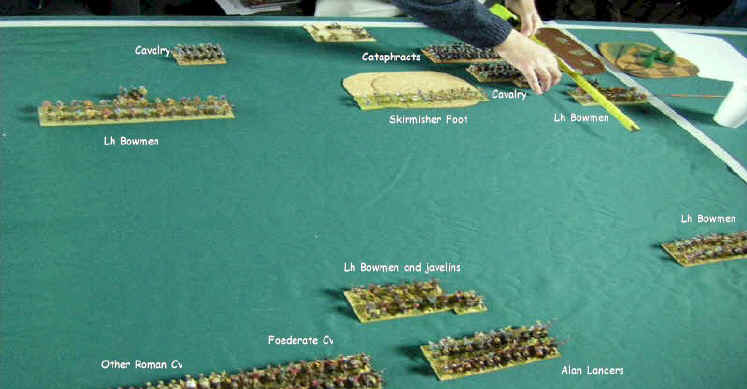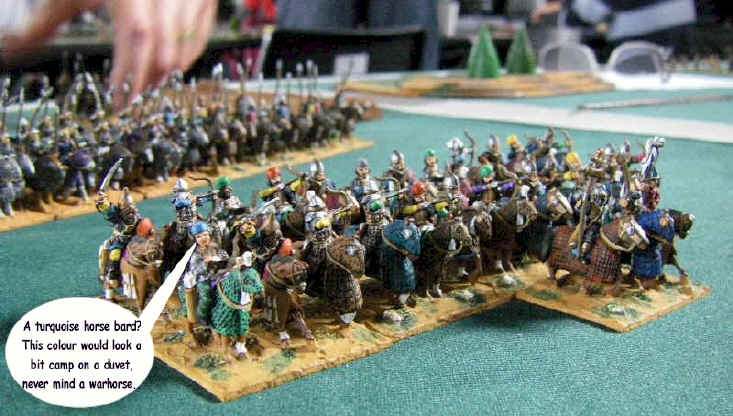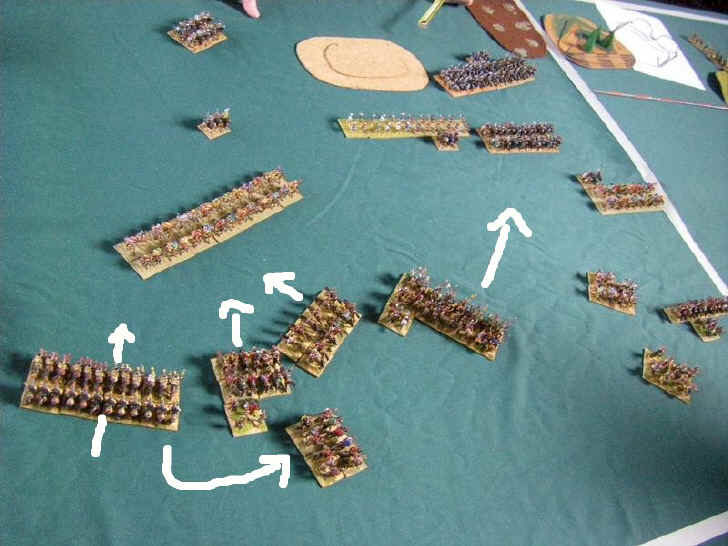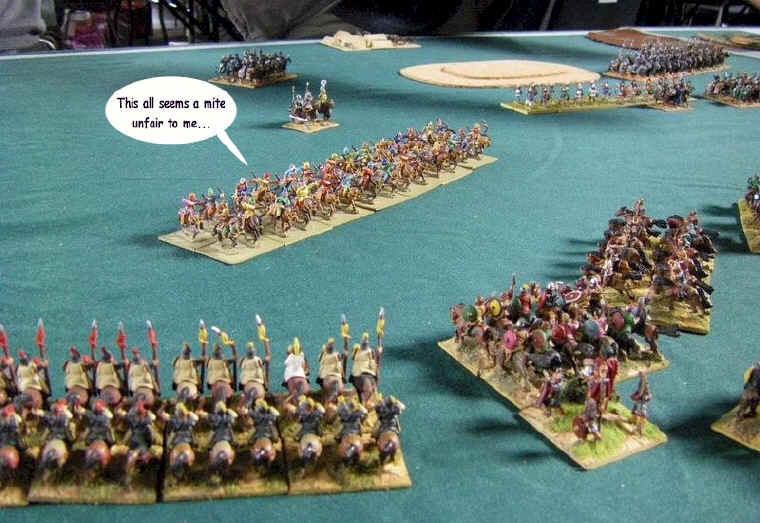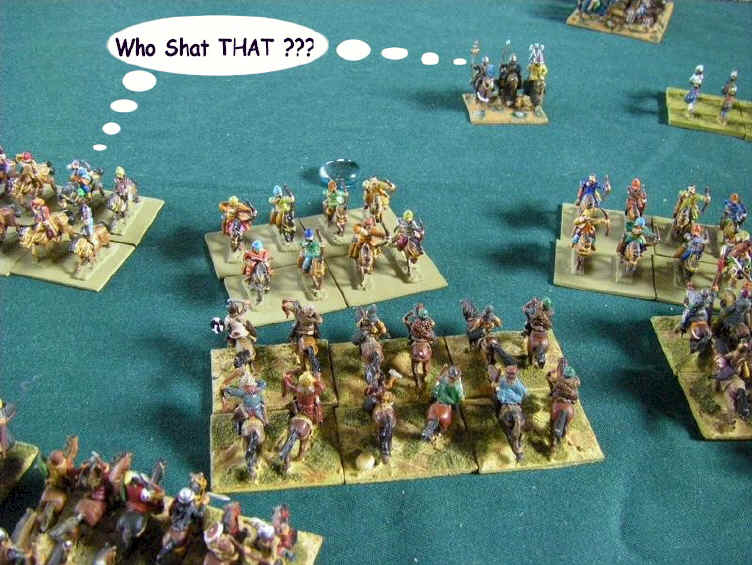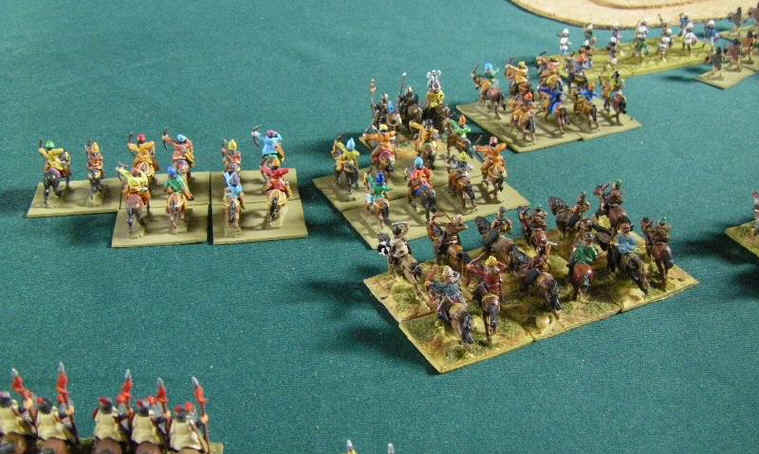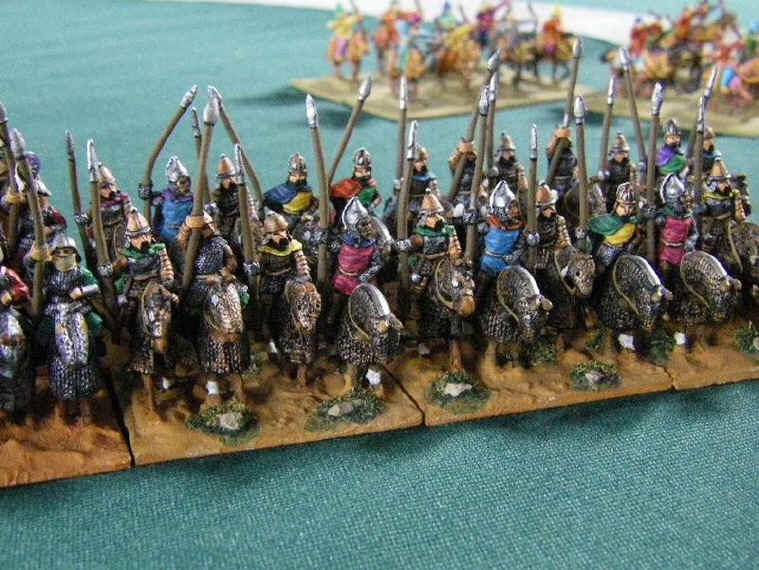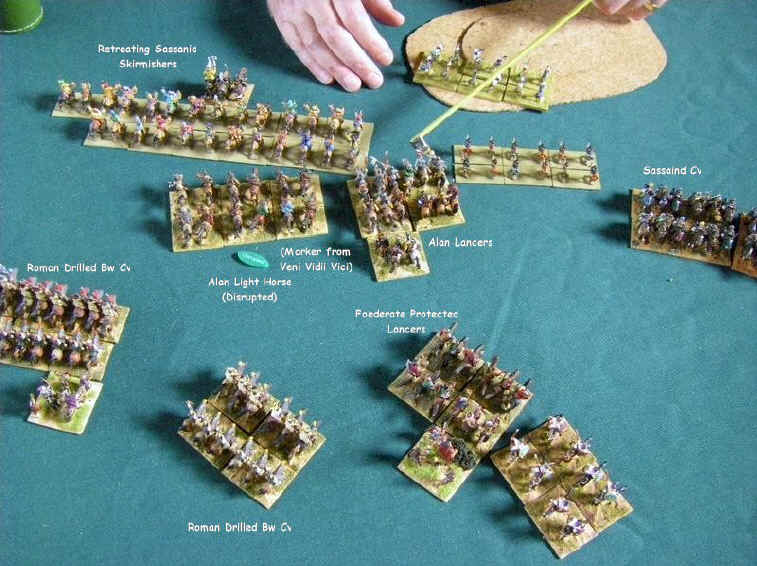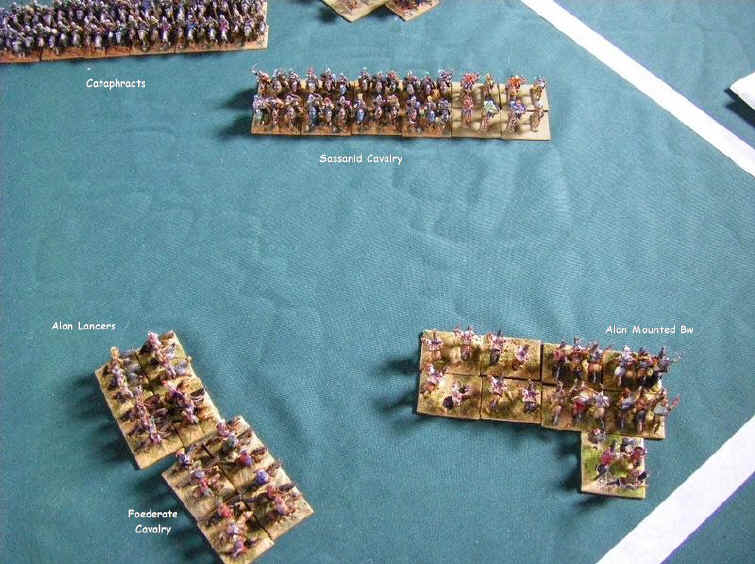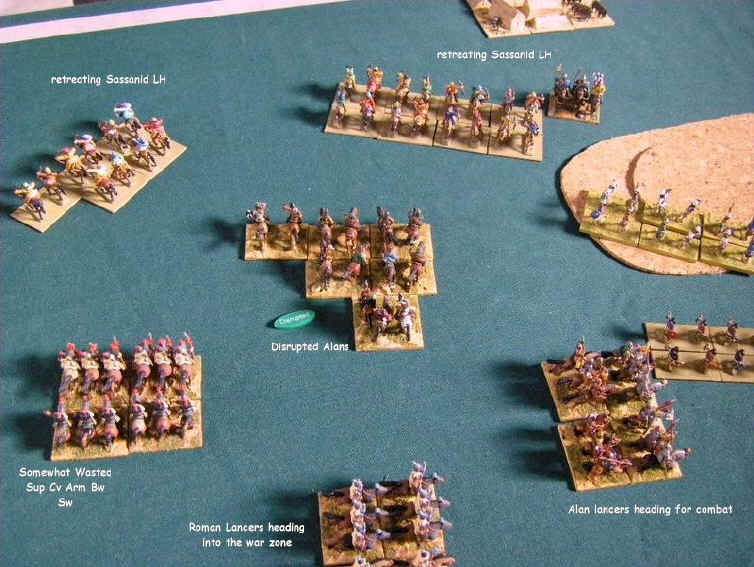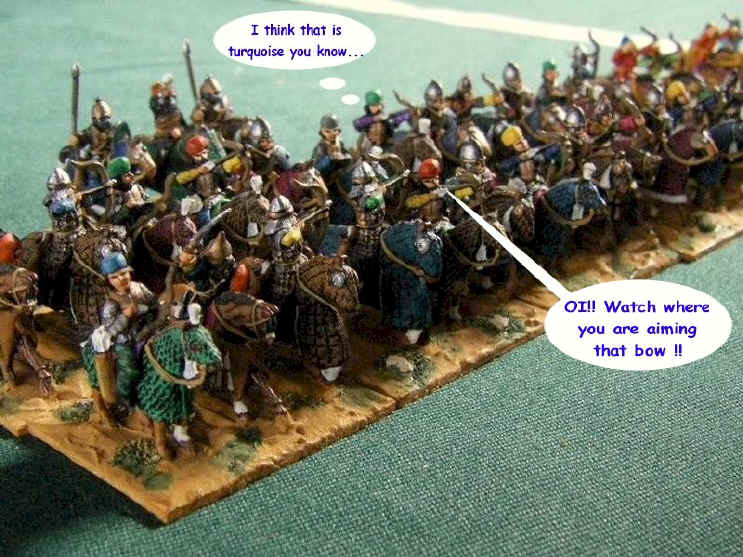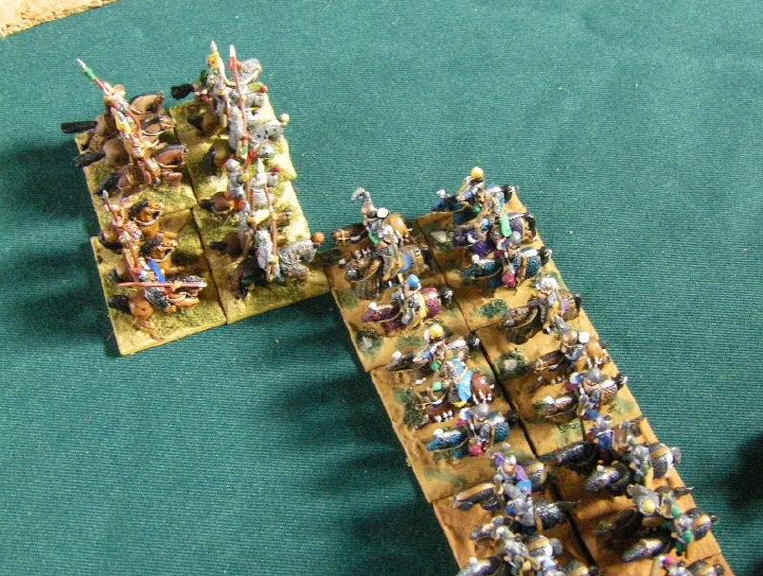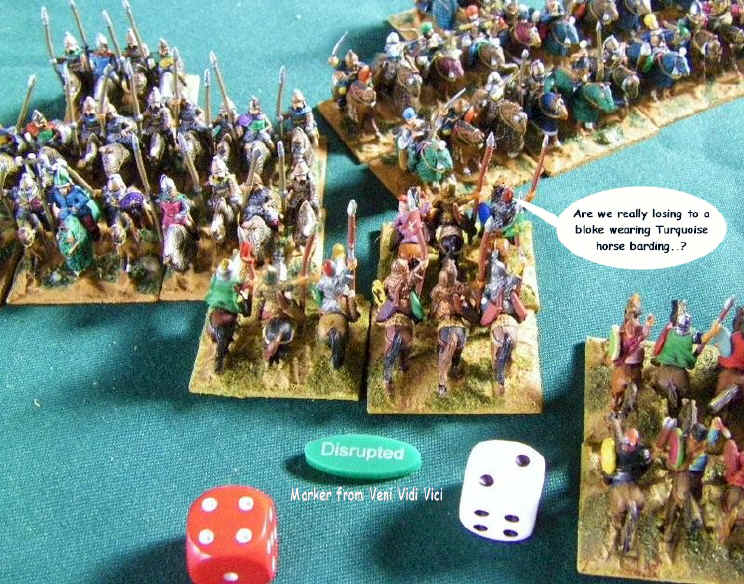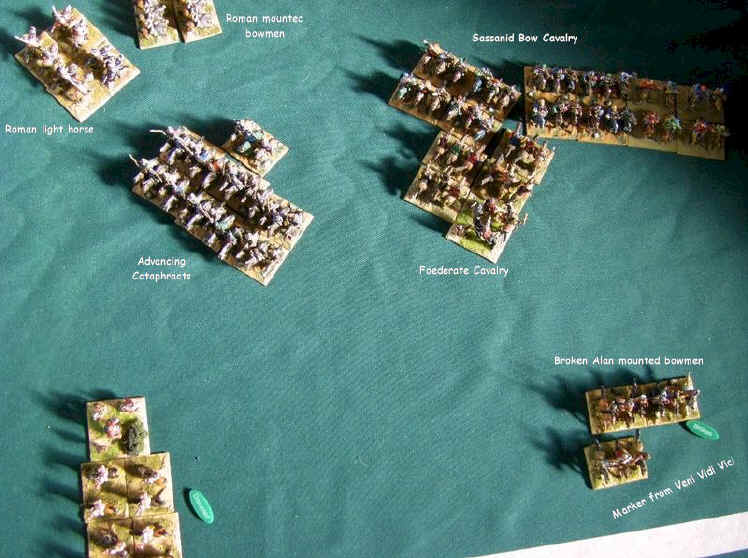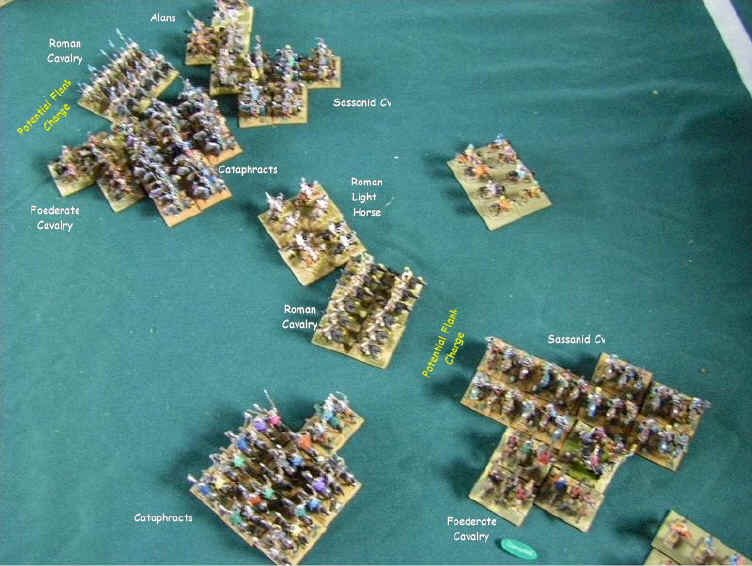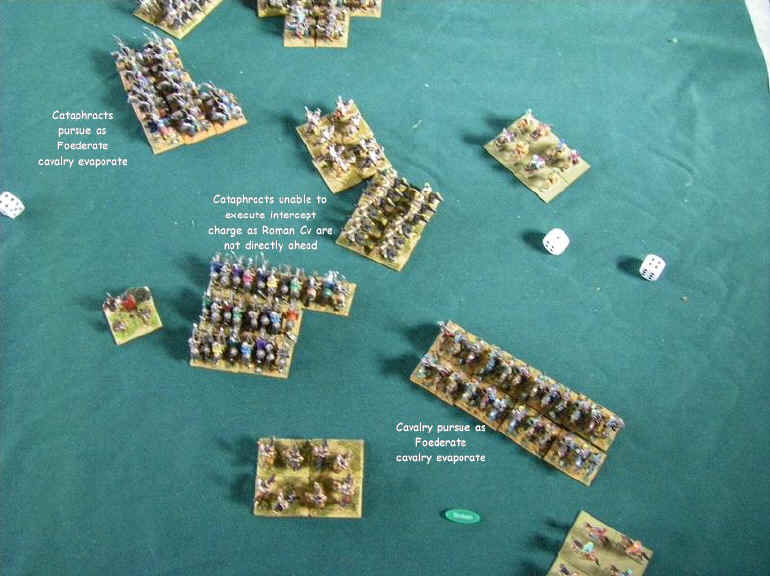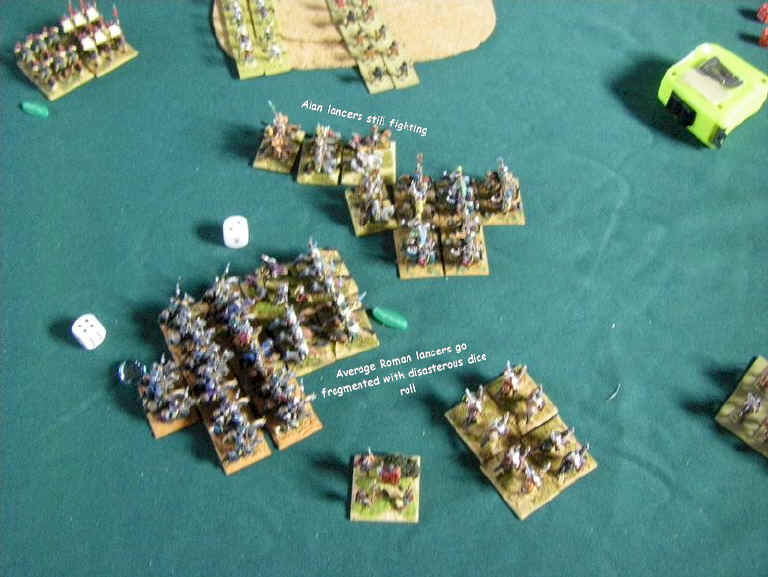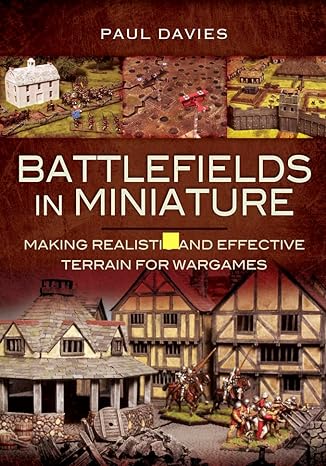Field of Glory Wargaming at Roll Call 2008
The welcome return of the venerable Roll Call competition brought back many memories - mostly of sausage & bacon butties in a cafe just off the High Street in Dunstable being scoffed swiftly in order to keep down a skinful of lager consumed in the nightspots of nearby Luton the night before. That was in the days of "Roll Call - Classic" - when the competition was organised in a massive 1970's concrete carbuncle by a shady secret organisation known only as The Shire Levy. Since then this event has roamed around the country and the calendar, including a few years in a public baths in glamorous Kettering (although that stopped after the infamous "those toilets are out of order sir" incident - a lesson to always take a poo in your hotel before day 2 of any competition for us all), a stay in Oxford (the year of finding a B&B with its own Curry house and Pub all on site - result!!) and then a year up in an aircraft hangar on the edge of Wales.
But now the BHGS were back in action, and the brand "Roll Call" was re-invigorated, re-scheduled to a colder time of year, and re-deployed down to High Wycombe.
Having gradually started to get the hang of this FoG malarkey (as in, realizing I don't know what I'm doing so taking a simple army) at Britcon I faced Roll Call with some optimism, and a Patrician Roman army which you can find on my groovy DIY Foederate Roman Army Page.
The army was supposed to allow me to make bold, aggressive moves and try and run people over by sheer weight of shock lancers (5 units) supported by shooting from 3 units of Shooty cavalry. If the enemy occupied rough terrain, I could amuse myself by executing complex moves courtesy of my Wildly Inspired commander just outside and get a draw :-)
I submitted the list before playing a single game with it - in fact before playing a game with any Shooty Cavalry at all - however some Italian geezer reckoned it was the cohones du carne (yes, I know....)
Game 1 saw me facing off against the Meister of the Rulebook himself, The Good Doctor of Dice, the Physician of .... erm, (something to do with Toy soldiers that starts with an "F"?) Mr Itchy Bodley-Scott !!! Well, hopefully he could explain to me how to use my army even if I didn't understand it myself....
Mr B-S was using another classic of the period - Sassanids
You can see the list and find out all about the Sassanids here
Pictures of Sassanid Troops from my Ancients Photo Directory
The terrain fell, well, it sort of slid off the table with a whimper really, and we were left with nothing of any consequence on the playing surface save for one steep hill that I fully expected the Sausages to use to anchor the left flank of an Cataphract & Elephant block. But sneakily they didn't, and shoved virtually the whole army in one corner with all their decent stuff in a heap.
The Sassanids leapt forward like one of Three Salmons (Usk joke there for those in the know), behind a skirmish screen of light horse fresh from the painters.
The Sassanid cavalry were also clearly brand new. It wasn't so much the painting that gave it away - more the fact they all appeared to be equipped with bows, whereas all Sassanids who had fought under earlier rulesets would have all been carrying lances, with bowcases tucked away somewhere underneath their armoured skirts...
With the Sassanids seemingly half-bottled up in a corner my plan was to sweep away the central light horse screen and try and swing round into the flank of the Cataphracts, whilst pinning and engaging the Sassanid bow armed cavalry with my Alan lancers. However I would need to sweep away the skirmish screen quite quickly as some of my best troops - the drilled cavalry - were really a long way out of the game out on my far left.
With the Alan lancers looking a bit light for the job in hand I re-allocated a unit of Foederate cavalry to move in behind my lines to try and join them quickly.
The Sassanid skirmish screen faced a formidable array of firepower from a variety of different sources - but they seemed unfazed - clearly more confident in their ability to get away than in my ability to catch them.
My one lightweight unit of average light horse were all that was holding up my flank, as my own bow armed Roman cavalry were Poor and really could not stand up to much fierce questioning. The Roman javelinmen were more bait than a serious threat however.
Soon we were starting to mix it up in the middle, as the sword-armed Alan light horse - 6 strong - managed to cause some "blue glass pebble" on their opponents (which is Old Welsh for "Disrupted " apparently - go figure !!??)
But the Sassanid Clibanarii (see - I remembered!!) weren't taking the bait on the right, and in a flurry of mixed metaphors they swung out wide right to open the stage door and allow the Cataphracts onto the table to see the rabbit! By now the Light horse had scuttled away...
...and the same was happening in the middle as the Sassanid skirmishers pulled back, allowing themselves to recover as they comfortably outdistanced my proper cavalry
By now the Cataphracts were moving into a position in which it would be difficult for me to to ignore them.
My most powerful drilled cavalry units were still chasing off lightly armoured mounted bowmen as the Sassanid battle line started to form, and closed on my Foederate cavalry.
My main strike force was now split, with 3 units of cavalry hoping to gang up on the Sassanid cavalry on my left before the Cataphracts got into combat. But I had little room to maneuver - and somehow I'd managed to get my allied units of Alan Lancers and light horse bowmen operating in three totally different parts of the field - so their general was almost useless!
The Alan LH had by now pushed back the Sassanid bowmen through the threat of their "we have sword, you don't" melee capabilities, and the prospect of the much more scary armoured bowmen on their left flank. But one unit of Alans was still not enough to keep the skirmishing Sassanids at bay, and so whilst the rest of the army swung round piecemeal to its left, the armoured bowmen continued to drive forwards, depriving the cutting edge of my army of one of its key combat units.
Back to the right, and the Sassanid cavalry had formed a coherent battle line as they waited for support from the cataphracts.
Anyway, at least someone was doing what they were supposed to be doing - the first unit of Alan lancers charged into the Sassanid cavalry, carefully avoiding contact with the Cataphracts in the process. Would the Lancer "+" count for anything .....??
Unfortunately not as the Sassanids stood, and the Alans lost a base !
On my right things were even worse, as the rash Alans found themselves charging 2 units - one of cavalry, one of cataphracts - and taking a pasting in the process! With base losses and disruption - and a general miles away - far from beating up the Sassanid cavalry, it now looked like they might not even last long enough for the Foederate cavalry on their right to get into contact with the Sassanid mounted bowmen!
In the middle the Sassanids were also hanging on doggedly, and my chances of rolling up the Cataphract line after beating up the mounted bowmen were in tatters. With the Alan general committed to bolstering his light horse bowmen it was down the the lancers themselves to tough it out.
Under heavy pressure from far better troops, and with me feeding units in piecemeal my right wing quickly imploded as the Alan lancers were totally destroyed, and the (non-allied) Alan protected bowmen were also broken in short order. Only a heroic effort by the Foederate cavalry led by a Roman general was keeping the wing even half in the game. But as the Cataphracts advanced out of formation, a unit of the Romans mounted bowmen were able to exploit the gap and drive through the Sassanid lines - would the Foederate cavalry survive long enough for help to arrive?
With the Alan cavalry in the center hanging on grimly, the Sassanids were suddenly starting to look outnumbered in the middle of the park. Their 2 large units of cataphracts had been split asunder - but the Romans only had one combat unit to shove into the gap. A desperate game of "supertanker turning circle" ensured as the unengaged cataphracts attempted to prevent the Roman cavalry clattering into the flank of the Sassanid cavalry ... and at the top more and more units of Romans piled into try and overwhelm the other cataphract unit again with a flank charge.
Now was not the time for both Foederate cavalry units to evaporate!! But they did, and the Sassanid Cavalry facing a potentially devastating flank charge were able to pursue their broken opponents and end up out of range of the consequences of their exposed flank ! The Cataphracts were not quite so fortunate, and were still exposing their rear to the Roman lancers however.
But even after being charged in the rear, the hard-as nails cataphracts managed somehow to survive - and then hand out a pasting in melee to the rather shocked and disgruntled Roman lancers who though they had done all the hard work. Being Average however once things started to go wrong, they went really really wrong very quickly - and soon my well engineered attack in the middle was in tatters..
With the Roman lancers unable to stand up at all against the cataphracts, they broke and the cataphracts charged into rear of the valiant Alans, destroying them also. Only the Alan general was now left to try and escape the jubilant Sassanid forces.
With the end of the game surely not too far off, would the Romans be able to hang on ? The only unit still engaged was the LH javelinmen who had squirted through the Sassanid lines when things looked more encouraging. With the IC throwing his not inconsiderable frame into the fray as well they fought against the Sassanid bow LH - and lost !
The game was over - a biggish defeat, although with 3 or 4 Sassanid units taken down as well.
Post Match Summary
What had in theory been a good matchup had been totally skittled by Richards offset deployment, which placed large numbers of my units well away from the main line of battle from the outset. I'd not really played - or thought about how to play - serious numbers of cataphracts with my army, and was somewhat caught in the headlights about how to deal with them.
Splitting the Alans had also clearly been a mistake - to fritter away the benefit of the general on supporting just the LH for most of the game was bad enough, but then to place both lancer units in different parts of the field so he could not move easily between them was compounding the error.
I'd also failed to get to grips with the Sassanid LH, despite my advantage in numbers and quality - they had managed to melt away in the center quite successfully, and even though I managed to overrun the baggage I could not push on to catch them as I always faced the risk of a round of bad shooting disrupting my cavalry - and with generals committed elsewhere on the table, I could not spare one for this as well.
One positive was that I realised that my protected Foederate lancers were just as good as my better armoured Alans against the Cataphracts - both had worse armour, but the Foederates were just cheaper!.
Hannibal's Post Match Analysis
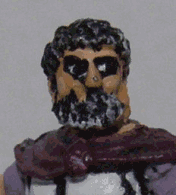
Well, at least there is some reality creeping into your post match comment now. But it looks like there's very little common sense, ability, or in fact anything even remotely resembling "generalship" creeping into your handling of the battle. Bringing an army to the table you'd only ever used once? Relying on troop types you had no experience of using? It Smacks of Incompetence to me...
Its actually quite hard to pick your biggest mistake - frankly the entire battlefield was almost totally obscured under a steaming pile of humungous "mistakes" on your part.
Assuming your opponent will just pony up and deploy nicely in the middle of the park - No1. Splitting the Alans - No2. Splitting your army into penny packets No3. Compounding the above by then attacking piecemeal - No's 4-6 inclusive. Need I go on...?
You know, when I read your Britcon reports (although why you didn't include me in them god only knows - I am far the most popular element of the whole website - in my opinion you might as well forget about the silly captions and poor quality gags to be honest and just have more of ME!!) I really thought for a while you were starting to get the hang of this military stuff. Concentrate your forces. Attack the enemy's weak points - not his strong ones. Don't reinforce failure. You were starting to do that by the end of the 6 games - and starting to win as well.
But here your forgot them all. And you didn't win.
NEXT!!!
The stage was set for the next round
The Ancient Army List Index
The Rise of Rome (280 BC to 25 BC) Mid Republican Roman ; Late Republican Roman ; Gallic ; Pyrrhic ; Later Carthaginian ; Ancient Spanish ; Later Macedonian ; Later Seleucid ; Later Ptolemaic ; Attalid Pergamene ; Numidian or early Moorish ; Pontic ; Early Armenian ; Parthian ; Later Jewish ; Illyrian ; Spartacus Slave Revolt ; Bosporan ;
Storm of Arrows - Western Europe in the Later Middle Ages (1300 AD to 1500 AD) Medieval French ; 100-yrs War English (Continental) ; 100-yrs War English (Britain) ; Later Medieval Scots ( Britain) ; Later Medieval Scots (Continental) ; Later Scots Isles & Highlands ; Medieval Welsh ; Later Anglo-Irish ; Medieval Irish ; Low Countries ; Later Medieval German ; Italian Condotta ; Swiss ; Free Company ; Medieval Burgundian ; Medieval Danish ; Medieval Swedish ; Medieval Castilian ; Medieval Crown of Aragon ; Medieval Portugese ; Later Granadine ; Navarrese ; Ordonnance French ; Wars of the Roses English ; Ordonnance Burgundian ; Santa Hermandad Nueva Castilian
Immortal Fire - The Greek, Persian & Macedonian Wars (550 BC - 146 BC)
Classical Greek ;
Early Achaemenid Persian ;
Lydian ;
Thracian ;
Syracusan ;
Early Carthaginian ;
Skythian or Saka ;
Kyrenean Greek ;
Late Dynastic Egyptian ;
Alexandrian Macedonian ;
Later Achaemenid Persian ;
Classical Indian ;
Early Successor ;
Early Sarmatian ;
Galatian ;
Hellenistic Greek ;
Graeco-Bactrian ;
Graeco-Indian ;
Indo-Greek :
Legions Triumphant - Imperial Rome (25 BC to 493 AD) Dominate Roman ; Principate Roman ; Foederate Roman ; Later Sarmatian ; Early German ; Dacian or Carpi ; Ancient British ; Caledonian ; Early Alan ; Jewish Revolt ; Sassanid Persian ; Kushan or Indo-Skythian ; Palmyran ; Early Frankish, Alamanni, Burgundi, Limigantes, Rugian, Suevi or Turcilingi ; Western Hunnic ; Early Visigothic & Early Vandal ; Early Ostrogothic, Herul, Sciri or Taifali ; Early Anglo-Saxon, Bavarian, Frisian, Old Saxon or Thuringian ; Gepid or Early Lombard ; Early Scots Irish ; Early Pictish ; Hephthalite Hunnic ;
Swords & Scimitars - The Crusades (1096 AD to 1311 AD) Early Crusader ; Later Crusader ; Fatimid Egyptian ; Georgian ; Seljuk Turk ; Cuman ; Komnenan Byzantine ; Post Latin Conquest Byzantine ; Ilkhanid Mongol ; Mamluk Egyptian ; Cilician Armenian ; Syrian States ; Khwarazmian ; Ayyubid Egyptian ; Middle Serbian ; Middle Bulgarian ; Medieval Cypriot ; Latin Greece ; Pecheneg ;
Eternal Empire - Eastern Europe and the Rise of the Ottomans (1300 AD to 1500 AD) Early Ottoman Turkish ; Later Ottoman Turkish ; Tatar ; Later Russian ; Later Serbian Empire ; Later Bulgarian ; Later Lithuanian ; Later Polish ; Later Teutonic Knights ; Catalan Company ; Middle Hungarian ; Moldavian or Wallachian ; Albanian ; Timurid, White Sheep Turcoman or Black Sheep Turcoman ; Later Hungarian ; Hussite ;
Decline & Fall - Byzantium and Islam (493 AD to 1071 AD) Early Byzantine; Maurikian Byzantine ; Thematic Byzantine ; Nikephorian Byzantine ; Later Moorish ; Later Visigothic ; African Vandal ; Italian Ostrogothic ; Early South Slav ; Lombard ; Avar ; Arab Conquest ; Early Bulgar ; Ummayad Arab ; Abbasid Arab ; Early North African Dynasties ; Khurasanian Dynasties ; Bedouin Dynasties ; Dailami Dynasties ; Pecheneg ; Ghaznavid ; Western Turkish (includes Khazar);
Wolves From The Sea - The Hairy European Dark Ages Post Roman British ; Early Welsh ; Later Scots Irish ; Merovingian Frankish ; Later Pictish ; Early Slavic ; Middle Anglo Saxon ; Astur Leonese ; Andalusian ; Early Navarrese ; Carolingian Frankish ; Viking ; Magyar ; Great Moravian ; Early Scots ; Rus ; Norse Irish ; Early Medieval French ; Early Medieval German ; Norman ; Early Polish ; Anglo Danish ;
Swifter Than Eagles - The Biblical Book Nubian ; Early Libyan ; Later Sumerian or Akkadian ; Early Nomad Allies ; Old or Middle Kingdom Egyptian ; Hyksos ; Mitanni ; Syro-Canaanite ; New Kingdom Egyptian ; Later Minoan or Early Mycenaean ; Hittite Empire ; ; Middle or Early Neo-Assyrian ; Later Mycenaean or Trojan ; Sea Peoples ; Philistine ; Phoenician Allies ; Neo-Hittite And Aramaean ; Later Hebrew ; Mannaean Allies ; Libyan Egyptian ; Urartian ; Median ; Neo-Elamite ; Proto-Arab Allies ; Cimmerian or Early Skythian ; Neo-Assyrian Empire ; Phrygian Allies ; Kushite Egyptian ; Neo-Babylonian Empire ;
Oaf of Fealty - Early Medieval Europe Feudal Catalan and Early Crown Of Aragon ; Early Hungarian ; Taifa Andalusian ; Feudal Navarrese and Aragonese ; Feudal Castilian Leonese or Portuguese ; Fanatic Berber ; Italo-Norman ; Feudal French ; Imperial German ; Feudal German ; Communal Italian ; Papal Italian ; Early Scots Isles And Highlands ; Feudal Scots ; Early Russian ; Feudal Polish ; Anglo-Norman ; Later Welsh ; Early Lithuanian or Samogitian ; Wendish Prussian or Estonian ; Early Medieval Frisia and Other Free Cantons ; Post-Viking Scandinavian ; Early Plantagenet English ; Later Sicilian ; Early Medieval Irish ; Early Anglo-Irish ; Early Teutonic Knights ; Mongol Invasion ; Early Granadine ; Middle Plantagenet English ;
Empires of The Dragon - China, Korea and Japan Erlitou-Shang Chinese ; Early Northern Barbarian Allies ; Early Zhou Chinese ; Yayoi Japanese ; Early Horse Nomad ; Ko Choson Korean ; Warring States To Western Han Chinese ; Qiang And Di ; Three Kingdoms Korean ; Eastern Han Chinese? ; Three Kingdoms W Jin And S Dynasties Chinese ; Kofun Nara Japanese ; Northern Dynasties Chinese ; Later Hindu North Indian ; Later Hindu South Indian ; Central Asian City States ; Western Wei To Early Tang Chinese ; ; Later Horse Nomad ; Tibetan ; Nepalese Allies ; Parhae Korean ; Late Tang To Five Dynasties Chinese ; Khmer Or Champa ; Thai Allies ; Nanzhao ; Pyu Burmese Allies ; Koryo Korean ; Early Heian Japanese ; Pagan Burmese ; Liao ; Song Chinese ; Xi Xia ; Ghurid Afghan ; Jin ; Late Heian To Muromachi Japanese ; Japanese Warrior Monk Allies ; Mongol Conquest ; Moslem Indian Sultanates ; Medieval Indonesian Or Malay ; Yuan Chinese ; Medieval Burmese ; Ming Chinese ; Yi Korean
Blood and Gold - The Americas Olmec ; Teotihuacan ; West Mexican ; Zapotec or Mixtec ; Toltec ; Chinantec ; Aztec ; Tarascan ; Tlaxcalan Confederacy ; Mayan ; Mochica ; Chanca ; Chimu ; Hatun-Colla ; Canari ; Inca ; Mapuche or Araucanian ; Amazonian Forest Tribes ; Tupi ; Chichimec ; Pueblo Culture ; Mound-Builder Culture ; South-Eastern Woodland Culture ; Timucuan ; Eastern Woodland Culture ; Plains Culture ; Pacific North-West Culture
View My Stats for My FoG Pages


